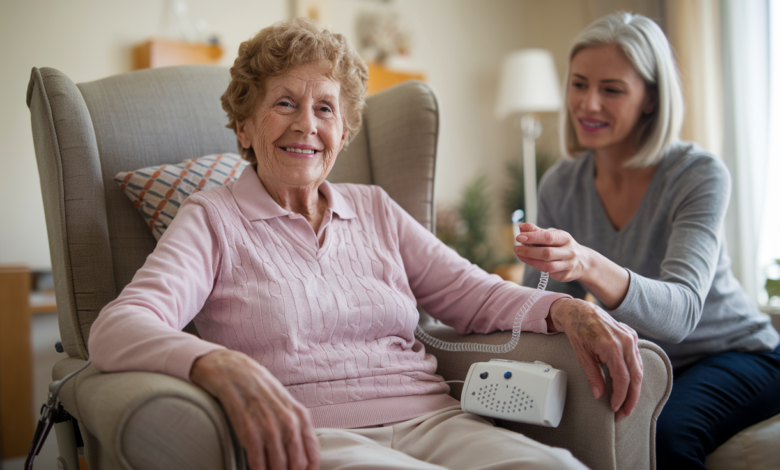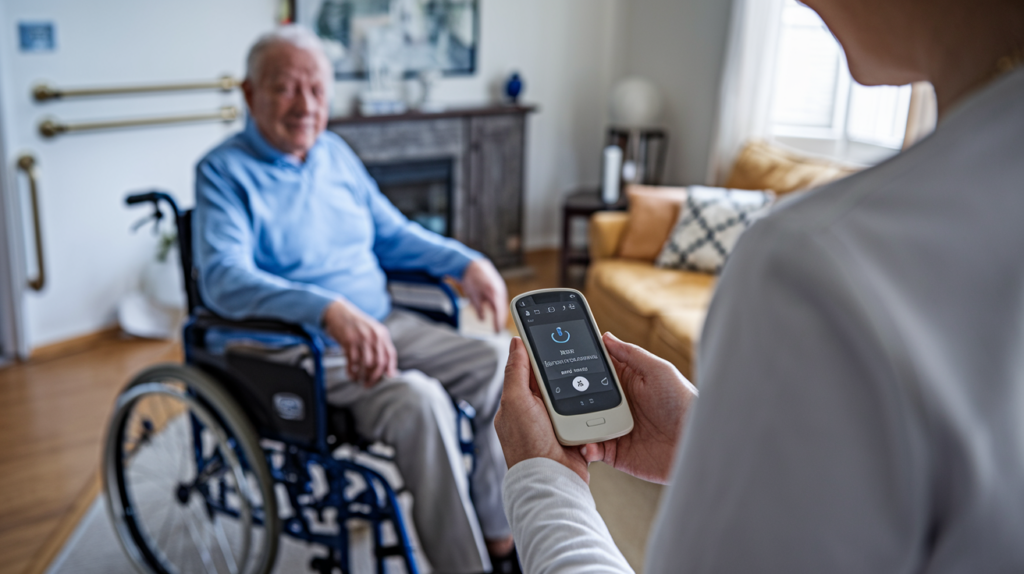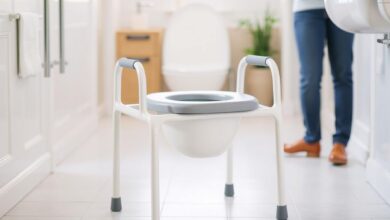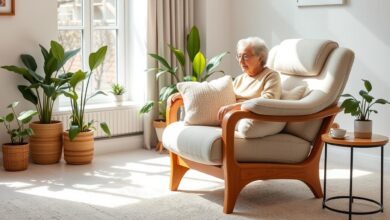Chair Alarms for Elderly: Enhancing Safety and Preventing Falls

As people age, maintaining safety at home becomes increasingly important, especially for seniors who are at risk of falls or other accidents. One effective solution to enhance elderly safety is the use of chair alarms for elderly individuals, a crucial fall prevention device designed to alert caregivers when a senior attempts to stand up or leave their chair unassisted. These alarms can significantly reduce the risk of injury while promoting peace of mind for both seniors and their caregivers.
In this article, we’ll explore the benefits, features, and types of chair alarms for elderly individuals, discuss how they help prevent falls, and address their limitations in home safety. We’ll also reference studies, expert opinions, and statistics to provide a thorough understanding of how these elderly safety products work and why they’re an essential tool for fall prevention.
Table of Contents
What Are Chair Alarms for Elderly?
Chair alarms for elderly are safety devices designed to alert caregivers when a senior attempts to stand up from a chair or wheelchair without assistance. These alarms detect changes in pressure or movement and sound an alert when the individual shifts from the seated position. Widely used in nursing homes, assisted living facilities, and private homes, these alarms help prevent falls, especially for elderly individuals with mobility challenges, cognitive impairments, or balance issues.
The Importance of Fall Prevention in Elderly Care
Falls are a leading cause of injury and hospitalization for older adults. According to the Centers for Disease Control and Prevention (CDC), around 36 million falls occur annually among older adults in the U.S., leading to 32,000 deaths. For seniors, falls can result in serious injuries such as fractures, head trauma, and long-term disability. In fact, falls are responsible for 95% of all hip fractures in seniors, making fall prevention a top priority in elderly care.
Chair alarms for elderly play a critical role in fall prevention by ensuring that caregivers are immediately notified when a senior stands up, enabling them to provide assistance before an accident occurs.
Benefits of Chair Alarms for Elderly
- Effective Fall Prevention:
The primary benefit of chair alarms for elderly is fall prevention. By alerting caregivers when a senior tries to stand, these alarms help minimize the risk of accidents, particularly for those with mobility impairments or cognitive conditions such as dementia. - Support for Caregivers:
Chair alarms allow caregivers to monitor multiple seniors more effectively, even from a distance. This reduces the constant need for close supervision and allows caregivers to attend to other tasks or take short breaks while ensuring the senior’s safety. - Peace of Mind for Families:
For family members and caregivers, chair alarms for elderly individuals provide peace of mind. Knowing that their loved one or patient is being monitored can significantly ease anxiety, especially when they are left unattended for short periods. - Promoting Independence:
While ensuring safety, chair alarms for seniors also allow elderly individuals greater independence. They can sit without the constant presence of a caregiver but remain under remote supervision.

Key Features of Chair Alarms for Elderly
- Sensor Type:
Chair alarms typically feature either pressure-sensitive pads or motion detectors. Pressure-sensitive pads trigger an alarm when the individual lifts their weight off the chair, while motion detector alarms sense movement around the seat or wheelchair. - Adjustable Volume:
Many chair alarms for elderly come with adjustable volume settings to ensure that the alarm is loud enough to alert caregivers without startling the elderly individual. - Wireless Connectivity:
Advanced chair alarms may offer wireless features, allowing caregivers to receive alerts on a pager or smartphone. This capability enables caregivers to monitor the elderly from different rooms, adding convenience and flexibility. - Easy Installation and Portability:
Most chair alarms for elderly are easy to install and can be moved from one chair to another, whether in the home or a healthcare facility. Their portability makes them versatile for use in different environments. - Battery-Powered vs. Plug-In Models:
Chair alarms can be powered by batteries or plugged into an outlet. Battery-powered models offer portability but need regular battery checks, while plug-in models ensure consistent functionality without interruptions.
Types of Chair Alarms for Elderly
There are several types of chair alarms for elderly designed to meet different needs:
- Pressure-Sensitive Pad Alarms:
These alarms are triggered when pressure is removed from the seat, making them ideal for seniors who spend long periods in a chair or wheelchair. - Motion Detector Alarms:
These alarms detect any movement around the chair and are best suited for seniors with a higher risk of falling or cognitive impairments like dementia. - Magnetic Pull-String Alarms:
Simple and effective, these alarms work by attaching a string to the senior’s clothing. When the string is detached by movement, the alarm is triggered.

Limitations of Chair Alarms for Elderly
While chair alarms for elderly are highly effective in reducing fall risks, they do have some limitations. In some cases, the alarm may startle or confuse the senior, particularly those with cognitive impairments. Moreover, chair alarms depend on the quick response of caregivers. If the alarm sounds and no one responds promptly, the senior could still be at risk of falling.
It is also essential to recognize that chair alarms for elderly should not replace comprehensive safety strategies. They are most effective when used alongside other fall prevention devices and environmental modifications, such as grab bars and removing tripping hazards from the home.
Conclusion
Chair alarms for elderly are an essential tool for fall prevention and elderly safety. These devices offer numerous benefits, including fall prevention, enhanced caregiver support, and peace of mind for families, all while promoting a sense of independence for seniors. By alerting caregivers when a senior attempts to stand unassisted, these alarms significantly reduce the risk of falls and related injuries.
However, while chair alarms are highly beneficial, they should be used as part of a broader safety strategy. Pairing them with other elderly safety products and environmental modifications ensures the highest level of protection for seniors in home or care settings.
For caregivers and families looking to improve elderly safety, investing in chair alarms for elderly can make a substantial difference, promoting a safer and more secure living environment for seniors while reducing the risk of falls and injuries.




